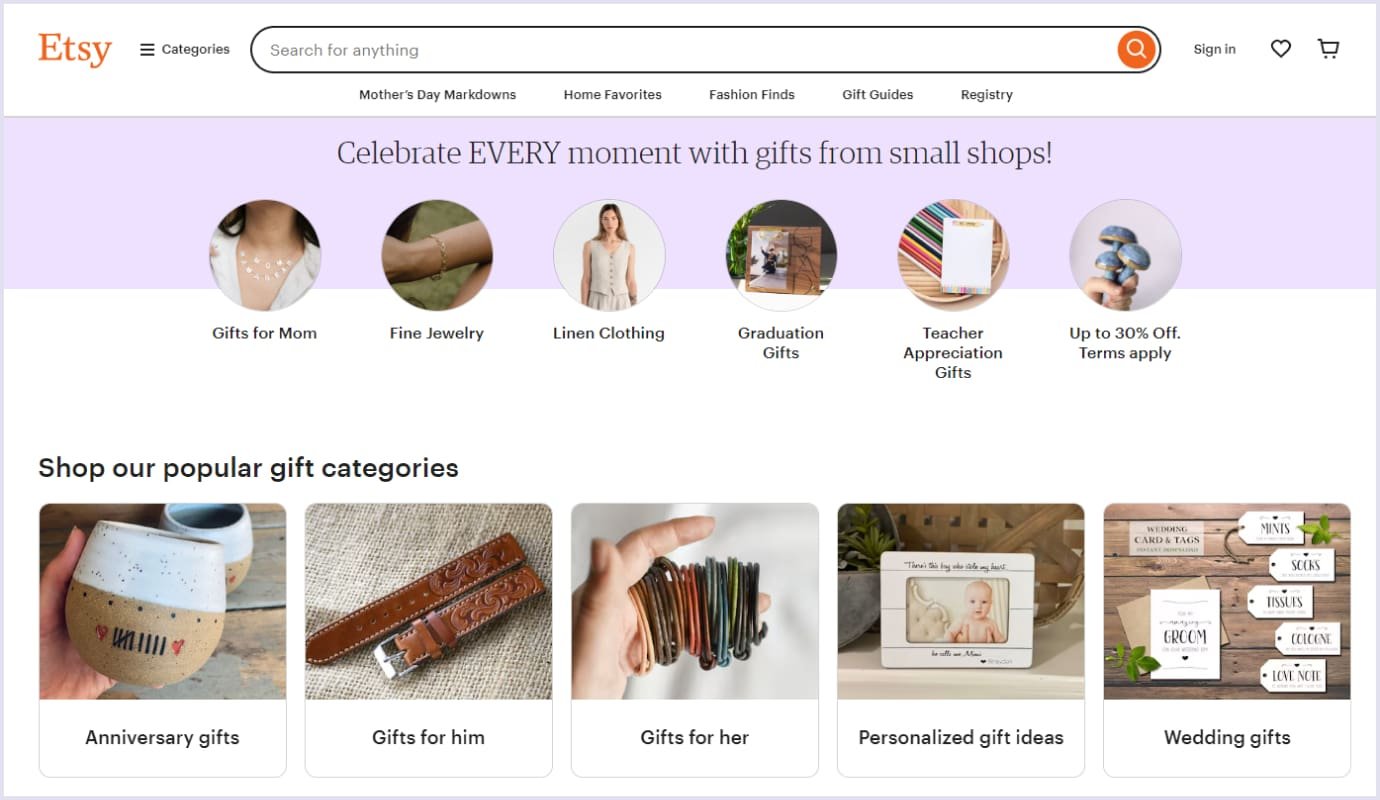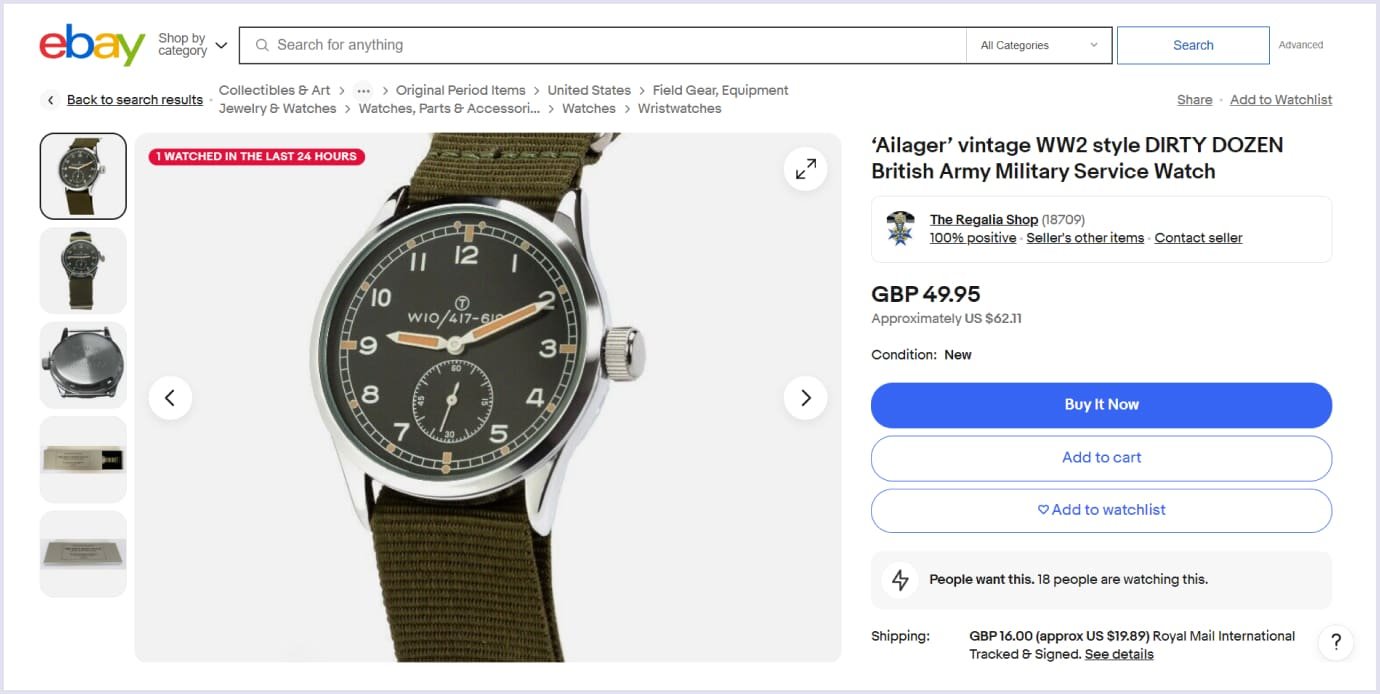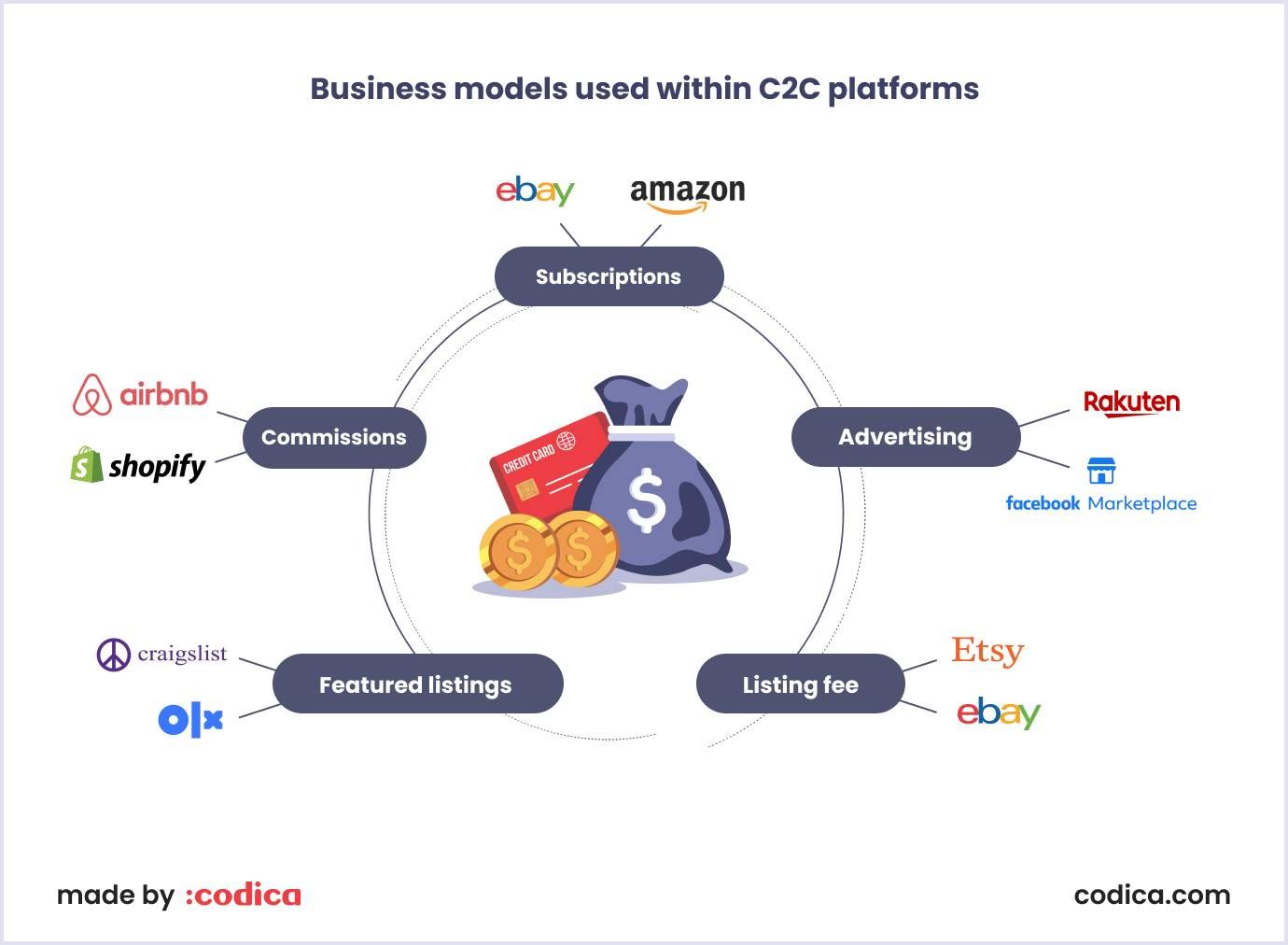It is expected that 95% of purchases will be made via e-commerce by 2040. With customers increasingly relying on e-shopping, C2C marketplace websites offer near-endless opportunities. Some players rode the wave and came out on top.
Usually, the C2C model is discussed from the customers' perspective. But what makes it appealing to a marketplace founder? In this article, we will provide five reasons why it is worth it for entrepreneurs to build an ecommerce website with a C2C model. Despite the bright future of C2C, several pitfalls must also be discussed.
Types of marketplaces: what is a C2C platform?
A marketplace platform is often the first thought that comes to mind when a user wants to buy something online.
Let’s first deal with the concept of the marketplace platform. It is a digital trading platform where various third parties provide their services or products. A consumer-to-consumer (C2C) marketplace platform is a business model where customers can trade with each other.
A C2C marketplace serves as an intermediary, matching one client to another. There are no intermediaries involved. The important thing is that one person can be a consumer, but they can later switch their role and start selling products.
The C2C marketplace platform is distinguished by the equality of participants as individuals. If one of the parties wishes to purchase any product or service, it agrees on favorable terms with the other. So, the needs of both the seller and the shopper are fully satisfied.
Here are several C2C marketplace examples. eBay, with 132 million active users, is a popular C2C platform. A leading carpooling marketplace, BlaBlaCar is the same marketplace type. A popular selling platform of Alibaba Group, Taobao, also belongs to the C2C sector.
Now, let’s briefly consider the major differences between C2C and other types of marketplace business models. There are also B2C (business-to-consumer) and B2B (business-to-business) models. Examples of the B2B business model are the Alibaba.com website and Walmart. The B2C business model is the Uber marketplace platform.
The table below helps you get an image of the aims of C2C, B2C, and B2B marketplace types.
| Comparison of the goals of different marketplace types | ||
| C2C | B2C | B2B |
| Offer goods or services | Offer multiple goods or services | Provide a solution for business |
| Present own UVP (unique value preposition) | Provide the brands | Trade to large players |
| Build a community of consumers | Make conditions for competition | Be the first in your own domain |
To figure out how to start a C2C marketplace, define the type of your future platform: vertical or horizontal. Which will suit you best? Let’s find out by comparing marketplace types.
Read also: How to Create an Online Service Marketplace: Ultimate Guide
So, what is the difference between horizontal and vertical marketplace software models?
Vertical C2C marketplace platform
This type of marketplace platform covers a particular category of products or services. Therefore, such websites have a narrow client base.
A vertical model enables you to provide users with a more personalized customer experience than a horizontal one. That’s because targeting a specific niche is more accessible than covering various audiences’ interests. Also, you can be a leading C2C marketplace platform in your domain. Yet, you might consider scaling your C2C marketplace to grow sales with a broader audience outreach over time.
Etsy is probably the most famous C2C marketplace example that follows the vertical type. Focusing on a niche of handmade and vintage items, the company provides an easy-to-use platform for craftsmen and their buyers.

One more example is Preply, a marketplace platform for online tutoring. You can find tutors for a range of subjects, most of which are languages.

Horizontal C2C marketplace platform
Unlike the vertical model, this marketplace type offers a broad spectrum of products in many categories. It's not specialized in a particular category but includes widely used and salable items.
This type of marketplace platform is attractive to a mainstream audience. However, this model can’t be leading in a specific domain.
The classic example is Amazon, which maintains its position to be one of the largest online selling companies.

Must-have functionality for the C2C marketplace platform
Let’s discover how to build a consumer-to-consumer online platform by delivering a first-rate experience. To begin with, let’s define common challenges that the C2C marketplace faces. Keep them in mind when defining the features of your future platform.
- The C2C platform is an intermediary and is not liable for product quality.
- Systematic feedback is required. Before clicking the "Buy" button, 92% of users check the reviews.
- Order cancellation and product return are issues your sellers may face.

The features that a C2C marketplace platform must have are as follows:
Account management
Split user accounts into two types: sellers and buyers. Let them both receive email notifications, including messages, applying new settings, etc.
Buyer-seller communication
Let sellers and buyers communicate to reduce the order cancellation and return rate. Ensure that all communication channels can keep users within your C2C marketplace platform. It is essential to make this communication secure for both sides.
Search and filters
Let your marketplace platform visitors be specific about the product they seek. Create a tool that allows users to filter search results by features and pricing options.
Ratings and feedback
Build a product rating system that can be modified by buyers. Let them share their feedback, positive and negative. Buyers should be able to report violators of marketplace platform rules, and add them to a blacklist.
Payment gateways
Provide multiple payment solutions that enable transactions directly on your C2C marketplace platform. These are PayPal, Stripe, Braintree, etc. Also, it is essential to ensure the security of transactions to protect users’ data and avoid unauthorized actions. For example, provide users with pre-authorization and other secure payment mechanisms.
Advanced product pages
Build trust in your C2C marketplace software. A complete product description is only half of it. Each offer must be accompanied by images. Typically, US customers expect to see from 5 to 8 pictures per product.

5 reasons to launch a C2C marketplace
If you are thinking of building an online C2C platform but are considering if it’s feasible, take notes on the following reasons.
1. Growing popularity of online C2C marketplaces
Today an online marketplace platform is the most preferred method for e-shopping. The C2C model has gained popularity with the advent of companies like Amazon, eBay, Airbnb, and others. Social media boost recent innovators such as Facebook Marketplace.
Below, you can see the diagram that shows the constant growth of online retail sales worldwide.

Source: Statista.com
2. Scalable C2C business model
Even in today’s Internet-oriented age, there’s a point in the classic view of the marketplace. The long-term partnership still plays a significant role.
You must take consistent small steps to expand your business without falling apart. As your marketplace grows, you embrace the appropriate tools for a greater audience.
The Airbnb marketplace is one rich C2C example of performing such a tactic. To compete against hotels, the company even took high-quality pictures of users’ apartments. Another case is Etsy, which invited the best vendors offline to pitch them on the platform they were launching.
Ready to scale means getting a proven track record and a reputable product. The rule is simple: top sellers attract more buyers, while a growing number of buyers attracts more sellers.
Take a moment to process Airbnb's and Etsy's growth, and you will not find a magic trick. Buyers and sellers are equally vital to these companies, so you should also avoid prioritizing one side over the other.
It is highly beneficial for vendors to recommend your C2C marketplace platform in their networks. Thus, you boost sales on your platform and cut expenses related to vendor outreach.
Related reading: 10 Smart Ways to Solve Chicken and Egg Problem for Online Marketplaces
Inexperienced sellers prefer to start on a C2C marketplace before creating their stores. For them, you can provide a fair chance to verify how valuable their offers are. Importantly, by creating a C2C marketplace, you help the vendors reduce marketing costs without any legwork.

3. Easy management
Since you already have more clarity on creating a C2C marketplace app or website, it’s time to dive into management. Below are several pros a C2C model offers.
Minimum legwork
Being the owner of a C2C marketplace means you don't have to acquire inventory or cover the costs of packaging and shipping items. Consequently, this model requires a smaller investment than an e-commerce approach.
No large workforce
If you don’t have a physical market, there’s no need for sales staff. You can scale the business without hiring a large workforce as sales grow.
Fast-generated traffic
With buyers increasingly relying on online reviews, growing C2C marketplace attendance is simple. In addition to user-written feedback, you can benefit from built-in wishlists. Once users share wishlists, the platform gets extra traffic.
Social omnichannel
Advertising a C2C marketplace is easy when effectively utilizing social media user bases. For instance, 50% of Instagram users are more interested in a brand when discovering its new products and services on the platform.
Perhaps the most apparent advantage relevant to both shoppers and sellers is price cuts. Therefore, a marketplace owner's main challenge is balancing supply and demand.
4. Variety of revenue models
As a marketplace owner, you must ensure your business's long-term viability when you create a C2C marketplace app or website. Here are several ways a C2C platform can generate revenue.
Subscriptions. Let the sellers select the plan type in exchange for upgrades. VIP subscribers may use advanced reports, customizable selling tools, storefronts, and more (e.g., Amazon). This usually requires a monthly payment.
Related reading: How to Create a Bidding Website Like eBay
Commissions. Applying this revenue approach makes sellers pay fees only when selling an item or a service (e.g., Shopify & Airbnb). It is one of the most reasonable monetization models for C2C marketplace software.
Listing fee. You charge vendors for listing products on the C2C marketplace platform (e.g., Etsy). This model certainly has pros and cons. If your marketplace business is launched recently, it certainly can push away potential users.
Featured listings. Sellers occasionally need to increase their chances of a speedy sale. Featured listings exist so vendors can place their offers highly on the searches (e.g., Craigslist and OLX). It is primarily a good revenue model if your marketplace provides a free service for sellers.
Advertising. Ads can be viewed as a secondary option to diversify your monetization model. An uncontrolled amount of advertising, however, will scare off multiple users. The best way here is to make these ads limited and personalized (e.g., Rakuten, Facebook Marketplace).

Normally, the C2C platform gets revenue from commissions charged for each sold item. A helpful tip for you is that such an approach can work well in the platform's early existence. A successful C2C marketplace combine multiple business models to achieve the highest revenue possible.
Learn more: 10 Best Monetization Practices to Build a Successful Online Marketplace
5. Quick transaction means quick revenue
A C2C advantage, which is to streamline the customer journey and provide transactions quickly, is also appealing. Let’s see what helps smooth this journey and accelerate the buying process in the C2C marketplace.
Best price satisfaction
Having multiple sellers and the ability to compare and negotiate a price is essential. This leads to the “best value for money” effect. Thus, on average, C2C sites offer comparatively cheaper products.
Quick visitor-to-customer conversion
The C2C marketplace has a wide range of visitors regardless of where they are. So, the chances of converting more of them into customers are higher—especially compared to those physically walking into a mall to browse.
Less user data required
As we pointed out earlier, there are no middlemen. The listing process takes only a few steps. Often, online transactions require some financial information. This, however, is not always implied within C2C payment operations.
Overall, it is all about customer empowerment and understanding the motives around their behavior. Let us bring some winning tips that will boost sales in your C2C marketplace:
Convenience in use
Searching for and buying goods should be convenient for users. This is the reason behind the simple design of multiple feature-rich C2C websites, including the Amazon marketplace. Also, making a shopping cart accessible from any page on your site will greatly save customers time.
Personalized discounts
Everyone appreciates a good deal on their favorite products. Research indicates that companies implementing personalization obtain over 40% more revenue than others. Also, it is reported that 48% of consumers expect perks for being good buyers.
Bundles
Many of us are familiar with such a tactic. You can show a user what product might be tied alongside those already kept in the shopping cart (e.g., monitor + cable organizer).
Payment gateways
Using a convenient and quick payment processing solution is beneficial when creating a C2C marketplace app or website. The right choice of payment solution assists you in controlling payments inside your platform quickly and easily. Read the article below to help you choose the best solution for your C2C marketplace.
Further reading: How Much Does it Cost to Build an Online Marketplace in 2024?
List of niches where C2C marketplaces thrive
If you want to start your booming C2C marketplace, we recommend you choose a niche first. It will give you a secure start for your business growth. Let’s see which directions you can take for a C2C model.
Gig services. The Upwork and Fiverr platforms help freelancers connect with individuals and provide services. Freelancers offer marketing, programming, design, writing, and more services on such platforms.
Second-hand products. Craigslist, Facebook Marketplace, and eBay have become thriving places for selling second-hand things. You can choose the right item in furniture, apparel, electronics, and other categories. Moreover, such platforms complement traditional retail sales of new items, making sales sustainable.
Arts and crafts. Etsy and LoveCrafts are prominent examples of C2C platforms. They provide environments for arts and crafts suppliers who can sell their products. On the other hand, buyers get unique, handmade products that delight them.
Grocery and household items. C2C marketplaces Instacart, FreshDirect, Shipt, and AmazonFresh help you get fresh foods to your home or office. They deliver various food and household items, making such platforms popular.
C2C marketplace development approach
When you decide to launch your C2C business, you can go one of two ways. You can develop a C2C marketplace platform from scratch or choose a “boxed” service with a standard set of features.
Each option of C2C marketplace software creation has its pros and cons. To make the right choice, you need to analyze the goals and assess the scope of the future marketplace platform. Below, we highlight the two most applicable approaches for building C2C marketplace software.
Out-of-the-box solution
You can immediately use plenty of SaaS (software as a service) tools, including Adobe Commerce, Sharetribe, Shopify, and others.
So, using these tools, you can easily start a marketplace platform in a few days. Also, there's no need to worry about updates. Software providers maintain their products' relevance.
However, such software can miss valuable functions that may turn out to be crucial in the long run. If you pick a customizable template for C2C marketplace development, it will leave you only a little room for maneuver.
At some point, you will have to scale your business to compete effectively. So, a ready-made solution is not enough to meet each customer's needs in the future.
Custom solution
In contrast, you can build your C2C website with up-to-date and extended features. This option can be pricey, but it will meet your concerns, as it is tailored to your unique business needs.
As a result, you will get a rich-featured web application free of licensing fees with custom design. Also, the web developers have vast experience in C2C marketplace website development. So, such a team will bring domain expertise to your project. It will help you avoid common C2C marketplace development mistakes, saving time and budget.
For instance, the Codica team delivered an online service marketplace and helped the client save costs on mobile app creation. The main idea of the project was to develop an activity booking platform. Using it, busy parents should quickly and easily find activities for their kids.
We also created a progressive web app that affected the search engine rankings of the web solution.
Below is a short video that shows how this C2C marketplace software web solution works.
How Codica can help you develop a booming C2C marketplace
At Codica, we have rich experience creating custom marketplace platforms, including C2C websites. Our delivered solutions are scalable and reliable and bring revenue to their owners.
We start the development process with project discovery sessions. This stage helps you discover all the details about the future development, like features, tech stack, and the team. So, you get an optimized development process and keep your costs minimal.
A brief video below tells more about this essential web development step.
After this phase, we create a minimum viable product (MVP). It is a base version of the future website. A client can launch an MVP to the market and present it to early adopters. Thus, improving the web solution upon the gathered feedback is possible.
Based on 8+ years of experience in the software market, Codica’s specialists develop web products that prove their efficiency. For one of our clients, we have delivered a multi-vendor marketplace platform for the automotive domain. The solution allows customers and merchants to communicate and seamlessly conduct payment operations within the platform.
At first, we created a marketplace MVP that assisted our client in raising investments. After that, we transformed the solution into a high-performing multi-vendor marketplace development platform.
Also, thanks to the high loading speed we provided, the solution is well visible by search engine mechanisms. So, it affected the number of website visitors.
Below, you can see how this C2C marketplace platform works in practice.
Since you’re here
A core idea of a C2C marketplace platform isn't about the volume of different payment operations made on the web. Initially, it's about forming сlose ties with existing users. On top of that, an ability to reach a large audience remains.
On average, the C2C website offers comparatively cheaper products. However, since a third party brings together vendors and customers, its reputation is crucial.
Thus, C2C marketplace development takes careful planning. To keep your business afloat, your site features must differ from what you see day-to-day. Fortunately, the Codica team has a proven record in delivering online marketplace development services. If you need help with quality marketplace development, feel free to contact us. We are eager to discuss your project and give you a free quote.

